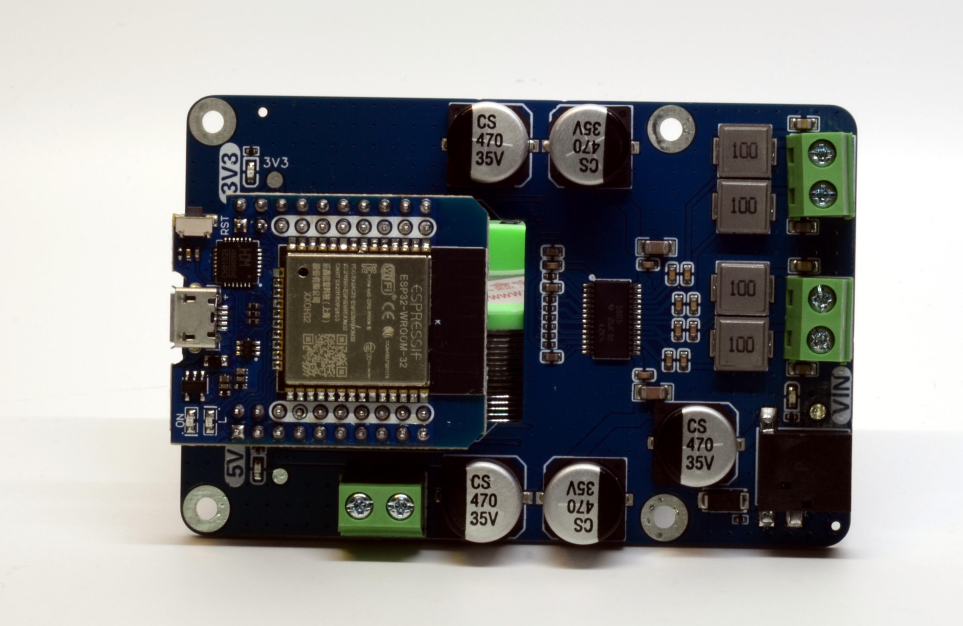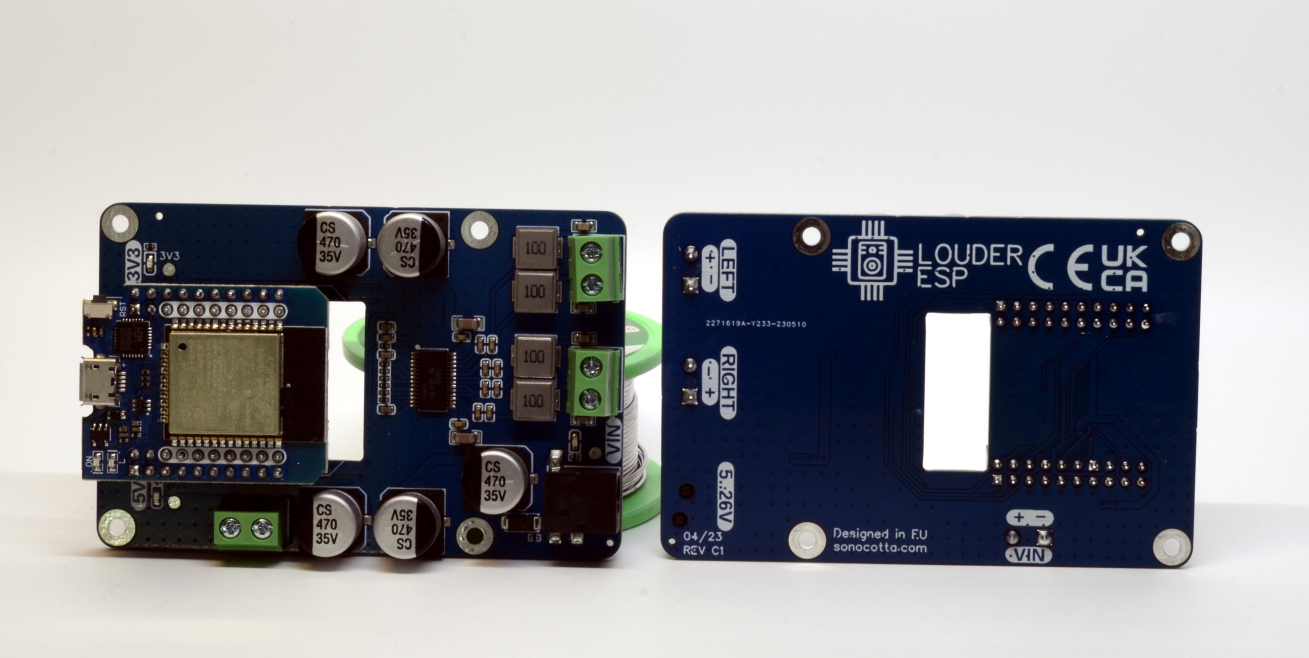I prepared 4 dock models to use.
Smallest in the range is ESP Audio Solo model, which is basically single MAX98357 DAC taking power from 5V rail, delivering single 3W mono channel output.
It is compatible with ESP8266, ESP32C3 and ESP32S2 mini modules and aiming entry level tasks, as all of the listed chips are single-core entry-level performance chips.
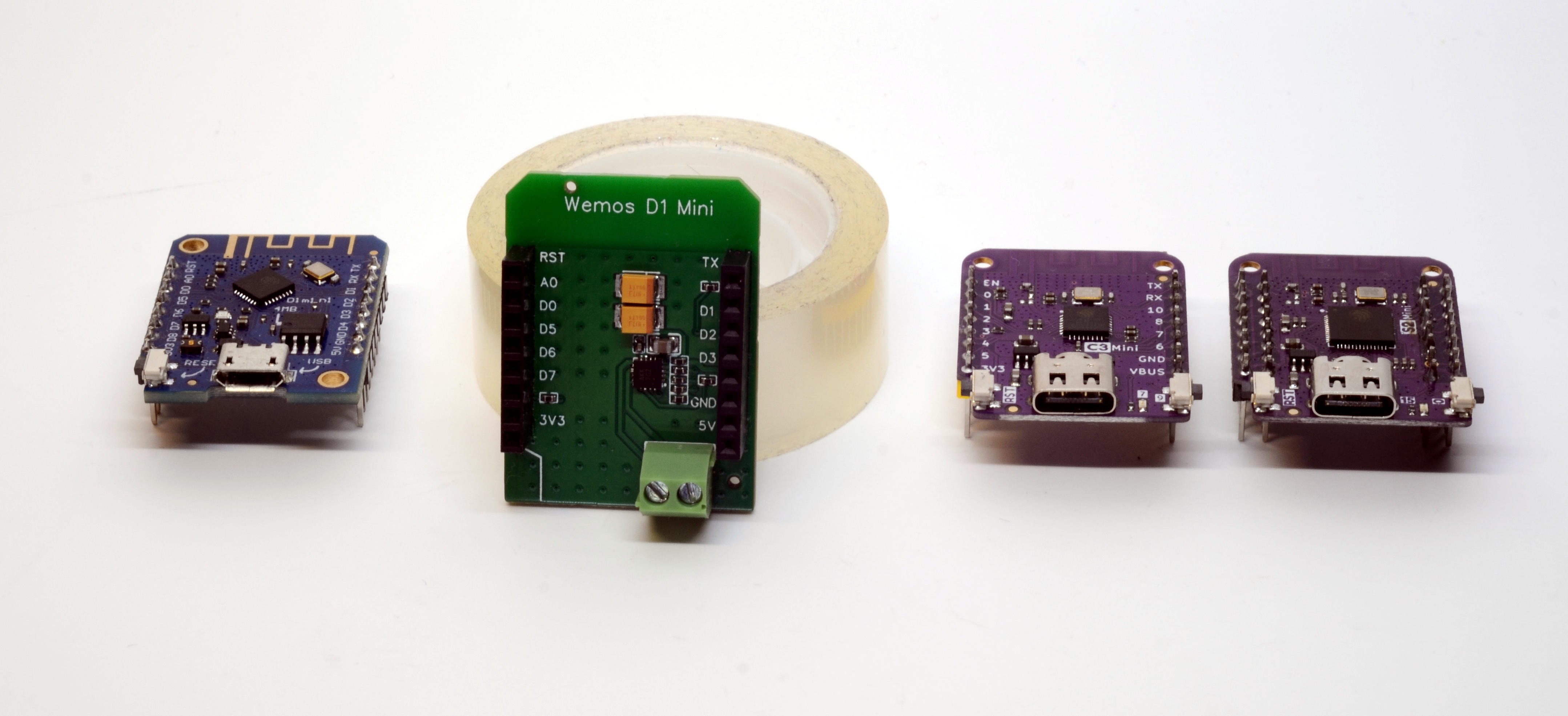
Next in the line ESP Audio Duo model, designed to work together with ESP32 mini module. Having some experience with audio related projects, it is clear that for audio streaming SPIRAM is the must (for buffering purposes). So I've decided to place PSRAM chip on the board, so any of-the-shelf ESP32-WROOM module gain WROVER capabilities, as soon as inserted into the dock. Plug in play, no further changes needed.
ESP Audio Duo adds stereo output, otherwise is is the same DAC and similar performance times two.
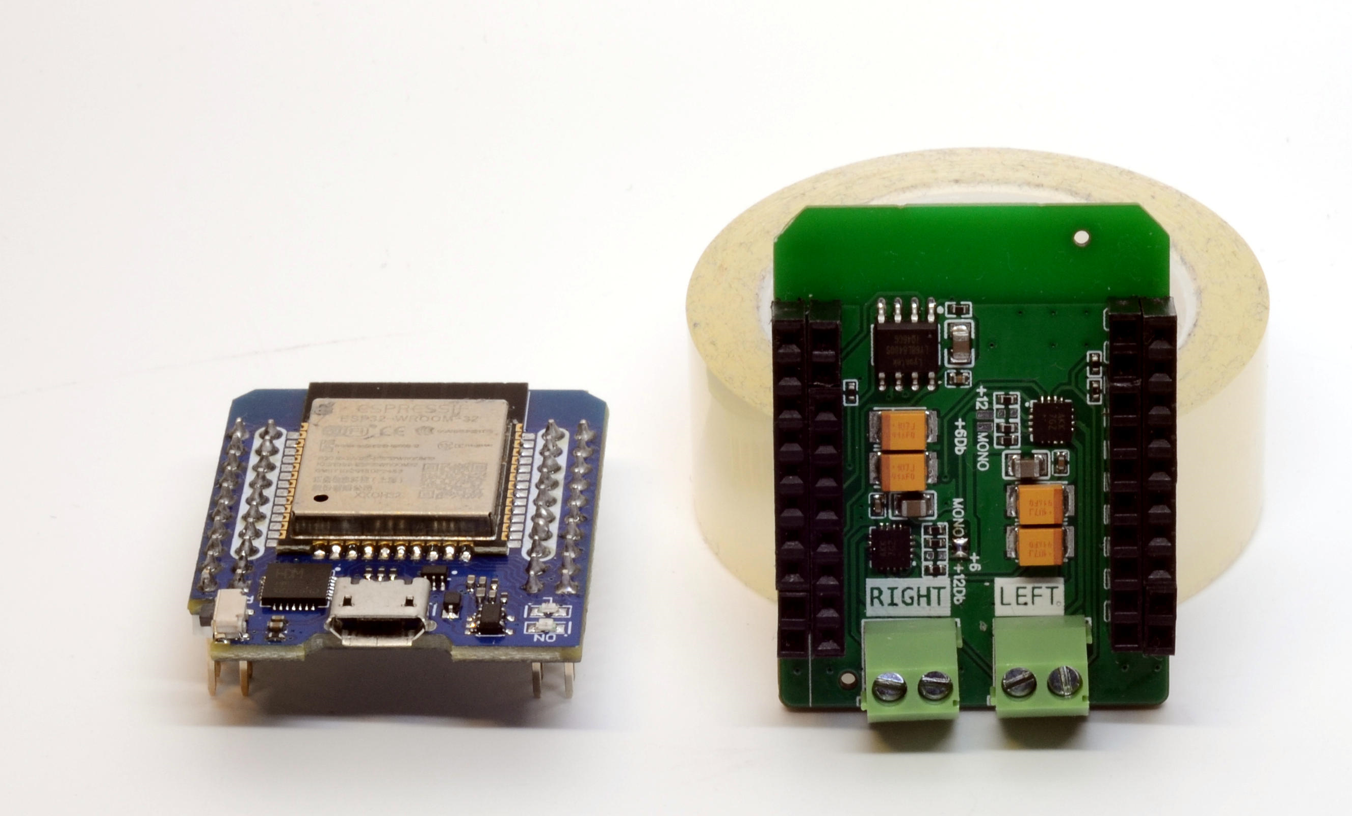
Next in the line HiFi-ESP32 driving PCM5100 DAC. It lacks power amplifier on the output, so normally you would need external amp. It is capable driving headphones though.
HiFi-ESP32 also has SPIRAM chip onboard.
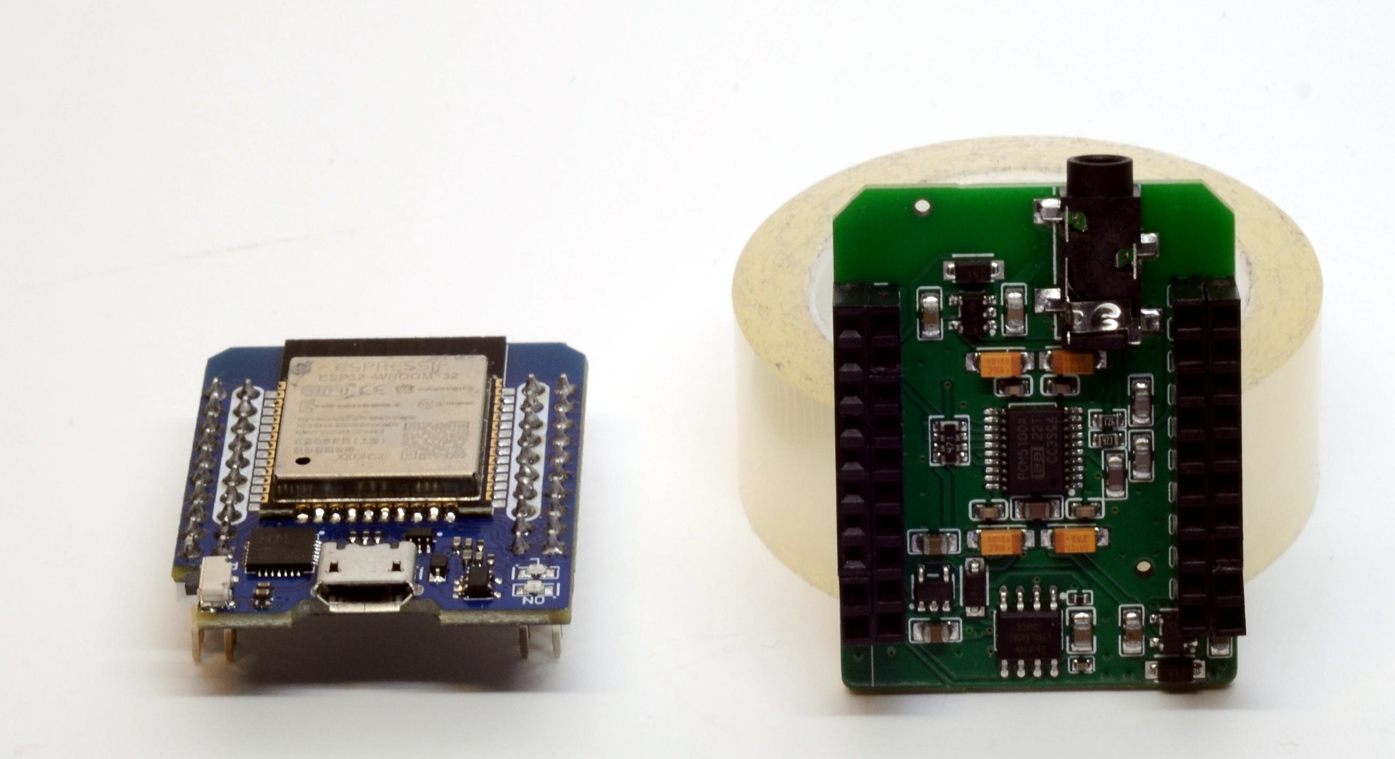
To make sure DAC performance is not compromised, it is powered from three independent Ultra-low-noise LDOs. As long as your ESP32 pushing data in, you should expect true Hi-Fi performance.
Last in the line is Louder-ESP driving TAS5805M DAC with D-class AMP. It is top performance part and it is capable to deliver 2 channels of 23W each to 8 Ohm load, so it is quite beefy. Clearly it requires external power source, so step-down voltage converter is added to generate 3.3V for ESP32 to use, when it is not connected to the USB.
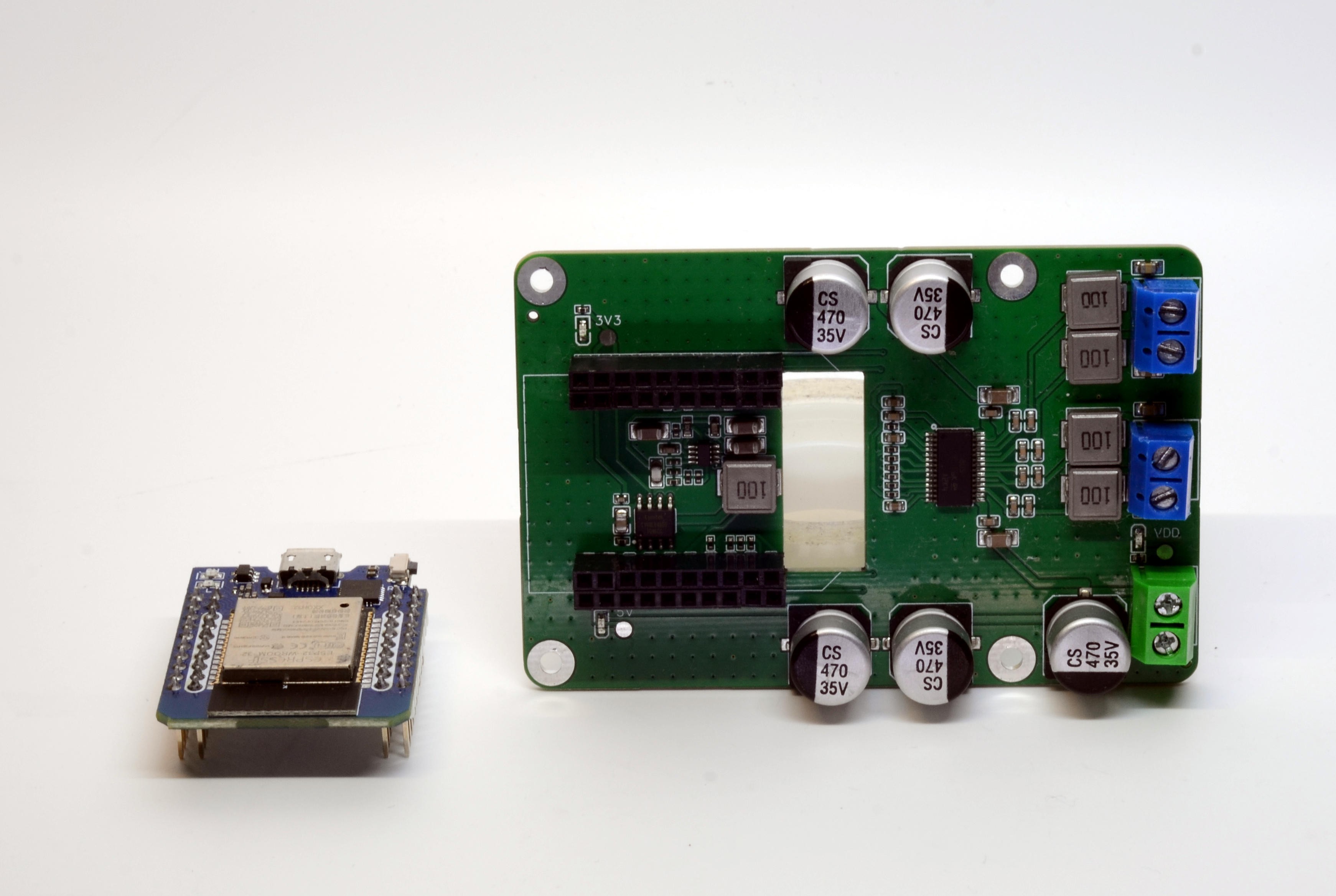
Like the rest of the line, SPIRAM chip is onboard.
This is real beast for grownups and a bit of "how to overdo ESP32 DAC". But hey, why not?
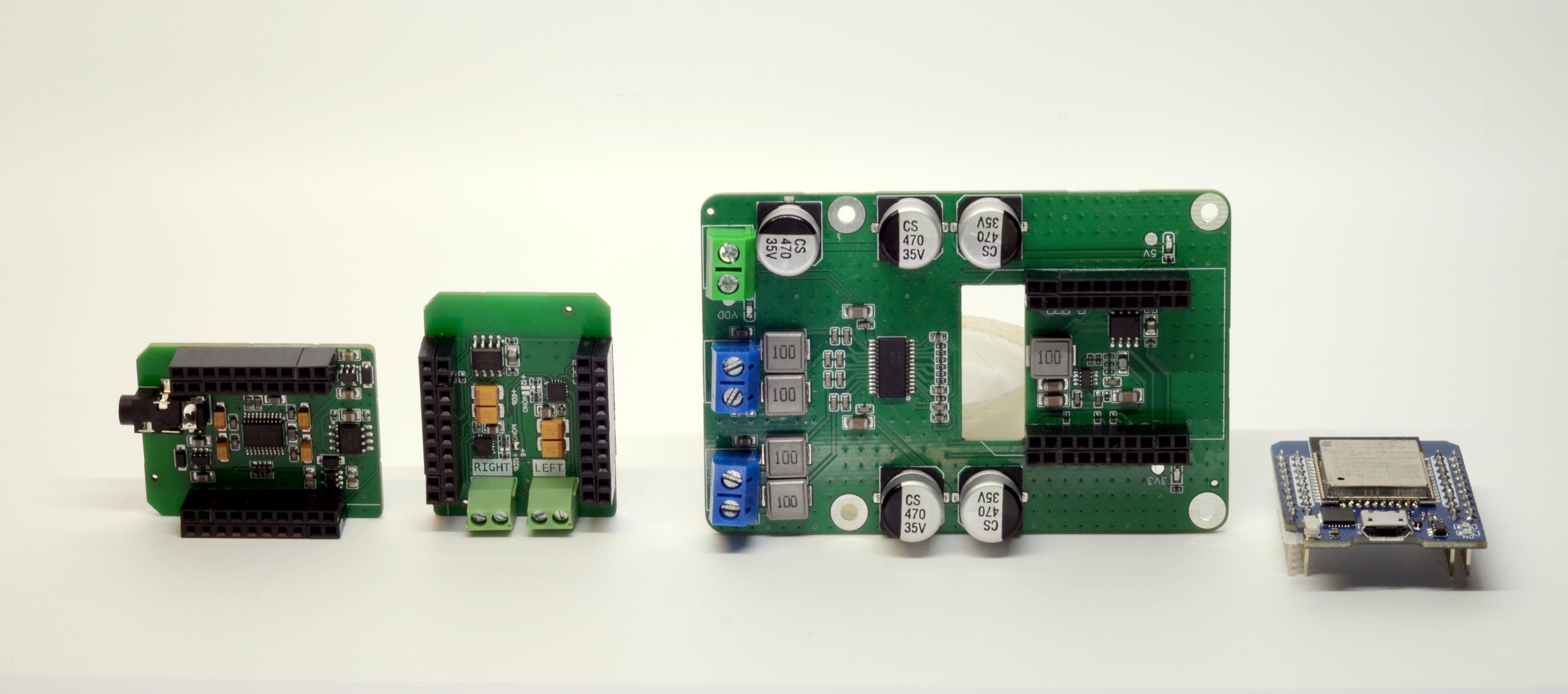
Short summary. For basic audio capabilities you can use Solo model, works with ESP8266, ESP32C3 and ESP32S2 hosts. For ESP32 you have a choice of 3 Hi-Fi capable devices. One requiring external amp, one reasonably powered and one unreasonably powered. Each full of fun!
 andriy.malyshenko
andriy.malyshenko